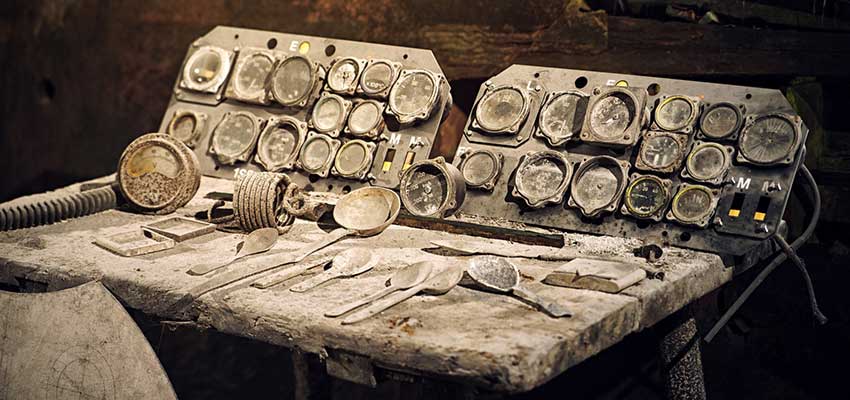When Is It Time to Abandon a WordPress Plugin?
One of the biggest reasons to love WordPress is the sheer number of available plugins. It seems like, no matter what type of functionality you need, there is at least one plugin that can do the job.
But it’s no secret that plugins can sometimes outlive their usefulness. As both our needs and WordPress itself change, we can find ourselves looking for better options. That can mean moving on from a plugin that had previously served us well.
Still, it’s not always the easiest decision to make. Sort of like an athlete that’s past their prime, we can let plugins hang around long after their best days have come and gone.
So, how do you know when it’s time to ditch a plugin and start fresh with something new? The following are a few telltale signs to watch out for.
It Hasn’t Been Updated in a Long Time
Think of a WordPress plugin as a living thing. If it’s properly cared for, it will flourish. If not, the results won’t be nearly as good.
Those of us who build websites with WordPress would ideally like to see that a plugin is updated at least on a semi-regular basis. That shows that its author is still actively involved, adding new features and fixing bugs.
That’s never been more important, what with WordPress moving to the Gutenberg editor and PHP 5.x being phased out. If a plugin hasn’t been actively maintained, then it’s likely to fall short of being compatible with either of these major changes. Plus, there could be serious concerns regarding security as well.
Now, that doesn’t mean that a particular plugin has to be updated weekly or even monthly. Depending on its purpose, that may not be necessary. But you will want to look for, at the very least, a couple of updates per year. Anything less than that and you might as well give it one last hug goodbye.

Updates Routinely Break
On the opposite end of the spectrum are plugins that, while continuously maintained, have become functionally unreliable. Updates are released frequently, but it’s usually because the previous ones have wreaked havoc on a number of websites.
This is frustrating, as you have a plugin that (at one point) did what you needed it to do. However, an over-aggressive developer has managed to cause as many problems as they have solved (if not more).
Depending on your personality, you may be willing to show some patience in this situation. Sometimes it actually pays off, as even a quality plugin can go through a rough patch and eventually right the ship. But inevitably things have to get better in short order. Otherwise, it’s just not worth the trouble.

It Has Become Bloated
A plugin quite often starts out trying to solve a specific problem. If it accomplishes that goal, its author may decide to add some related features to make it even more useful. This can be a great thing, if the new additions are well-executed.
The downside is that, over time, some plugins morph from solving a single problem into something that tries to solve every problem. This once terrific piece of software now is more accurately described as bloatware.
This can have negative effects on your website. For one, more features mean more code. The chances of both annoying bugs and hits to performance rise with every new feature.
It can get to the point where a plugin is no longer a good fit. In that case, it’s time to look for one that’s more focused and efficient in its functionality.

There’s Something Better
When it comes to plugins, part of a web designer’s job is to provide clients with the best option available. But just because a plugin was once the best option doesn’t mean it will stay that way forever.
This is especially so when it comes to plugins that occupy overcrowded categories like SEO or photo galleries. It seems like someone always comes along and tops whatever the previous leaders have done.
That doesn’t necessarily mean that we should immediately jump off the bandwagon when something new comes out. But it does suggest that it’s worth keeping an eye on what else is out there. You may find that another plugin offers something that you just can’t pass up.

Change Can Be Difficult, but Necessary
Let’s face it. It can be a real pain to swap one plugin for another. The process often involves refactoring or even recreating content that was being used by the old plugin so that it plays nicely with the new one. Therefore, it’s not a decision to take lightly.
Then, there’s always the unknown of how that new plugin will work out. Will there be any unintended consequences from using it? How can you be sure that it will still be around in a few years? Testing helps, but there’s still a leap of faith required when making a switch.
In the end, this is all part of a website’s lifecycle. The good news is that, with so many choices out there, making those changes to a WordPress website will just about always lead you to a better path forward.
:) Hit link to watching video...! http://bit.ly/2E5ukEI
Contributer : 1stWebDesigner
 Reviewed by mimisabreena
on
Monday, February 11, 2019
Rating:
Reviewed by mimisabreena
on
Monday, February 11, 2019
Rating:
















No comments:
Post a Comment